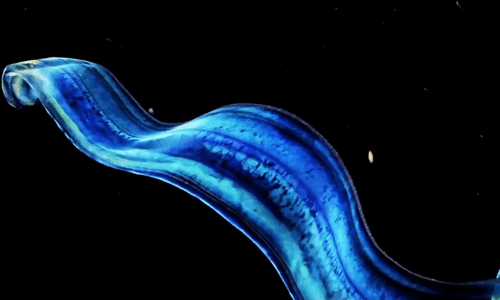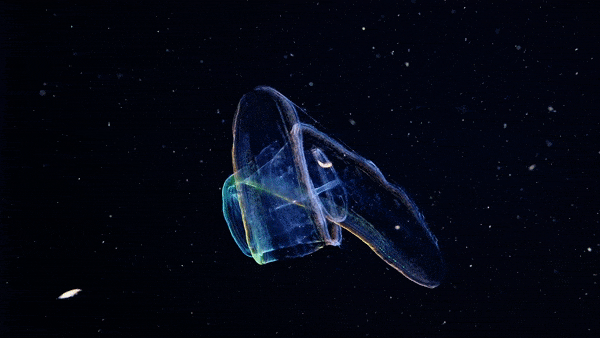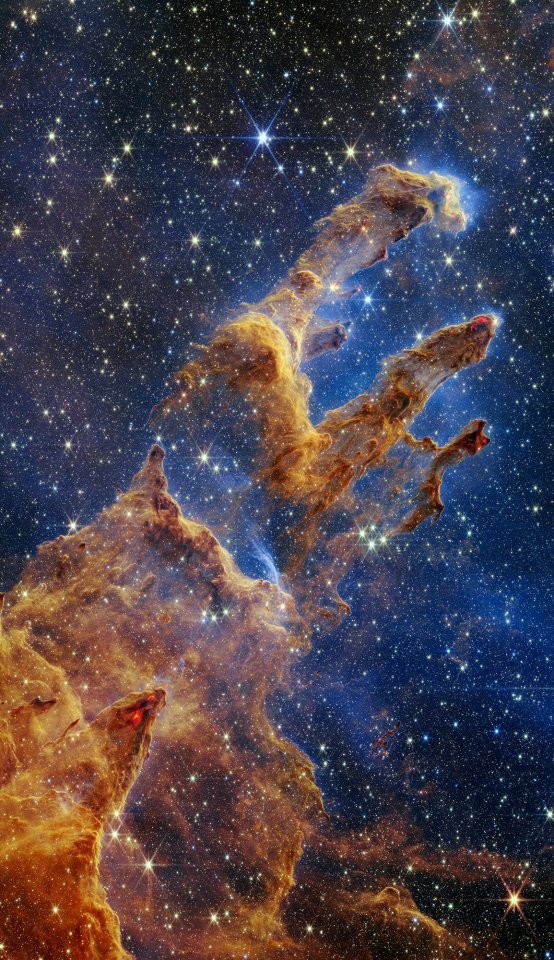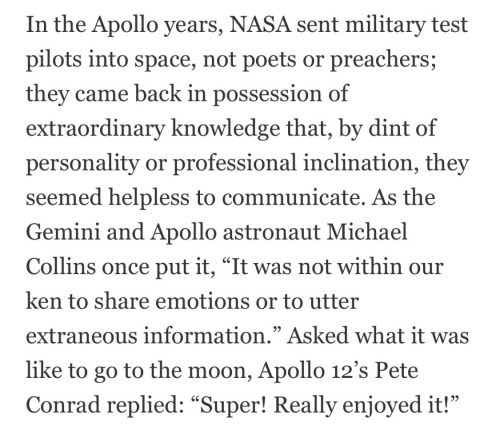The Venus Girdle (Cestum Veneris) Is A Comb Jelly In The Family Cestidae. The Colorless Species Are Transparent









The Venus girdle (Cestum veneris) is a comb jelly in the family Cestidae. The colorless species are transparent when suspended in water, except for their iridescent rows of comb plates. In other words, they majestic as fuck. Love to sea it 🌊
More Posts from Ad-astra-affecte-spe and Others


The photos that NASAHubble & NASAWebb took of The Pillars of Creation inspired me deeply. I had to draw what I saw in the formation: A hand reaching into the universe. What an accomplishment for humankind and what a symbol for exploration and knowledge. Credit 2nd image: NASA

Neptune's rings & moon Triton © Voyager 2
New pics of Io just dropped

More are over here at NASA's Juno probe site.

The close-up of the Andromeda Galaxy from the Hubble Space Telescope shows how many stars there really are.
source

JWST Breaks New Ground - Twice
Between the orbit of Jupiter and Saturn lies a small 151Km wide asteroid/minor planet called Chariklo. This left over from our early solar system hasn't been imaged before, and was too small for JWST to image too, however, the JWST team were waiting for an opportunity to do some science.
Because of it's size, the only way they could do this was if a star passed directly behind the asteroid from the location of JWST, so it was put on a watch list, and in October, this is exactly what happened.
This is the first time any telescope has been able to see an object it wouldn't ordinarily be able to image, simply due to a chance occultation, so marks a first and interesting method for looking at some of these far off objects.

The asteroid happens also happens to sport a small ring of debris, and as the star didn't quite make a direct occultation, it did pass through the debris rings, being picked up twice as it passed through.

But what really was impressive was the second bit of data gathered, as the occultation occurred JWST was able to record the composition, detecting water ice.
Up until now, it had been assumed that the asteroid would have a significant water ice component, but this is the first time anybody has been able to take some real data from it.
Objects like Chariklo tell us so much about the early solar system, how Earth got it's water, and what other systems and exoplanets are likely made from.

South Island, New Zealand

What did Hubble see on your birthday? (x)
Dec. 3, 2009 - Stellar Jewel Box NGC 3603

NASA Hubble Space Telescope - The ‘Swan Nebula’
-
 sisyphusxvii reblogged this · 2 weeks ago
sisyphusxvii reblogged this · 2 weeks ago -
 sleepylittlespacecadet reblogged this · 2 weeks ago
sleepylittlespacecadet reblogged this · 2 weeks ago -
 darkeyeswachaswedance liked this · 2 weeks ago
darkeyeswachaswedance liked this · 2 weeks ago -
 kymothy reblogged this · 3 weeks ago
kymothy reblogged this · 3 weeks ago -
 pearl-crystals liked this · 3 weeks ago
pearl-crystals liked this · 3 weeks ago -
 jayfeather3d liked this · 4 weeks ago
jayfeather3d liked this · 4 weeks ago -
 hellooldsmelly liked this · 4 weeks ago
hellooldsmelly liked this · 4 weeks ago -
 ghostsandgod reblogged this · 4 weeks ago
ghostsandgod reblogged this · 4 weeks ago -
 mergatrude reblogged this · 1 month ago
mergatrude reblogged this · 1 month ago -
 borderschizo liked this · 1 month ago
borderschizo liked this · 1 month ago -
 kregoslupmoralny liked this · 1 month ago
kregoslupmoralny liked this · 1 month ago -
 struggling-art-archive liked this · 1 month ago
struggling-art-archive liked this · 1 month ago -
 unclassyfied404 liked this · 1 month ago
unclassyfied404 liked this · 1 month ago -
 ryjkowiec reblogged this · 1 month ago
ryjkowiec reblogged this · 1 month ago -
 zaddycasgirl liked this · 1 month ago
zaddycasgirl liked this · 1 month ago -
 spixelate liked this · 1 month ago
spixelate liked this · 1 month ago -
 meanderings0ul liked this · 1 month ago
meanderings0ul liked this · 1 month ago -
 selfdestructanddie reblogged this · 1 month ago
selfdestructanddie reblogged this · 1 month ago -
 ef-tu-brute liked this · 1 month ago
ef-tu-brute liked this · 1 month ago -
 lattebookworm liked this · 1 month ago
lattebookworm liked this · 1 month ago -
 fifthmagpie reblogged this · 1 month ago
fifthmagpie reblogged this · 1 month ago -
 fifthmagpie liked this · 1 month ago
fifthmagpie liked this · 1 month ago -
 sulimo1979 liked this · 1 month ago
sulimo1979 liked this · 1 month ago -
 emmy007 liked this · 1 month ago
emmy007 liked this · 1 month ago -
 idk6505 liked this · 1 month ago
idk6505 liked this · 1 month ago -
 worrynoodle liked this · 1 month ago
worrynoodle liked this · 1 month ago -
 jaybird-harper reblogged this · 1 month ago
jaybird-harper reblogged this · 1 month ago -
 troodon17 reblogged this · 1 month ago
troodon17 reblogged this · 1 month ago -
 danascullly reblogged this · 1 month ago
danascullly reblogged this · 1 month ago -
 cthulhus-handmaiden reblogged this · 1 month ago
cthulhus-handmaiden reblogged this · 1 month ago -
 cthulhus-handmaiden liked this · 1 month ago
cthulhus-handmaiden liked this · 1 month ago -
 itwilldecay reblogged this · 1 month ago
itwilldecay reblogged this · 1 month ago -
 disapointmentdotcom reblogged this · 1 month ago
disapointmentdotcom reblogged this · 1 month ago -
 disapointmentdotcom liked this · 1 month ago
disapointmentdotcom liked this · 1 month ago -
 melting-essentials reblogged this · 1 month ago
melting-essentials reblogged this · 1 month ago -
 melting-essentials liked this · 1 month ago
melting-essentials liked this · 1 month ago -
 strawlessandbraless reblogged this · 1 month ago
strawlessandbraless reblogged this · 1 month ago -
 chernobylcatfish09 liked this · 1 month ago
chernobylcatfish09 liked this · 1 month ago -
 pearlescentspider reblogged this · 1 month ago
pearlescentspider reblogged this · 1 month ago -
 antler-dog-central reblogged this · 1 month ago
antler-dog-central reblogged this · 1 month ago -
 luciole-dans-la-nuit reblogged this · 1 month ago
luciole-dans-la-nuit reblogged this · 1 month ago -
 the-archivist-raven liked this · 1 month ago
the-archivist-raven liked this · 1 month ago -
 tongue-blisters liked this · 1 month ago
tongue-blisters liked this · 1 month ago -
 vvenkexingily liked this · 1 month ago
vvenkexingily liked this · 1 month ago -
 halfpoisonhalfgod liked this · 1 month ago
halfpoisonhalfgod liked this · 1 month ago -
 jackalyote reblogged this · 1 month ago
jackalyote reblogged this · 1 month ago -
 dezlet reblogged this · 1 month ago
dezlet reblogged this · 1 month ago

★•Astronomy, Physics, and Aerospace•★ Original and Reblogged Content curated by a NASA Solar System Ambassador
204 posts

